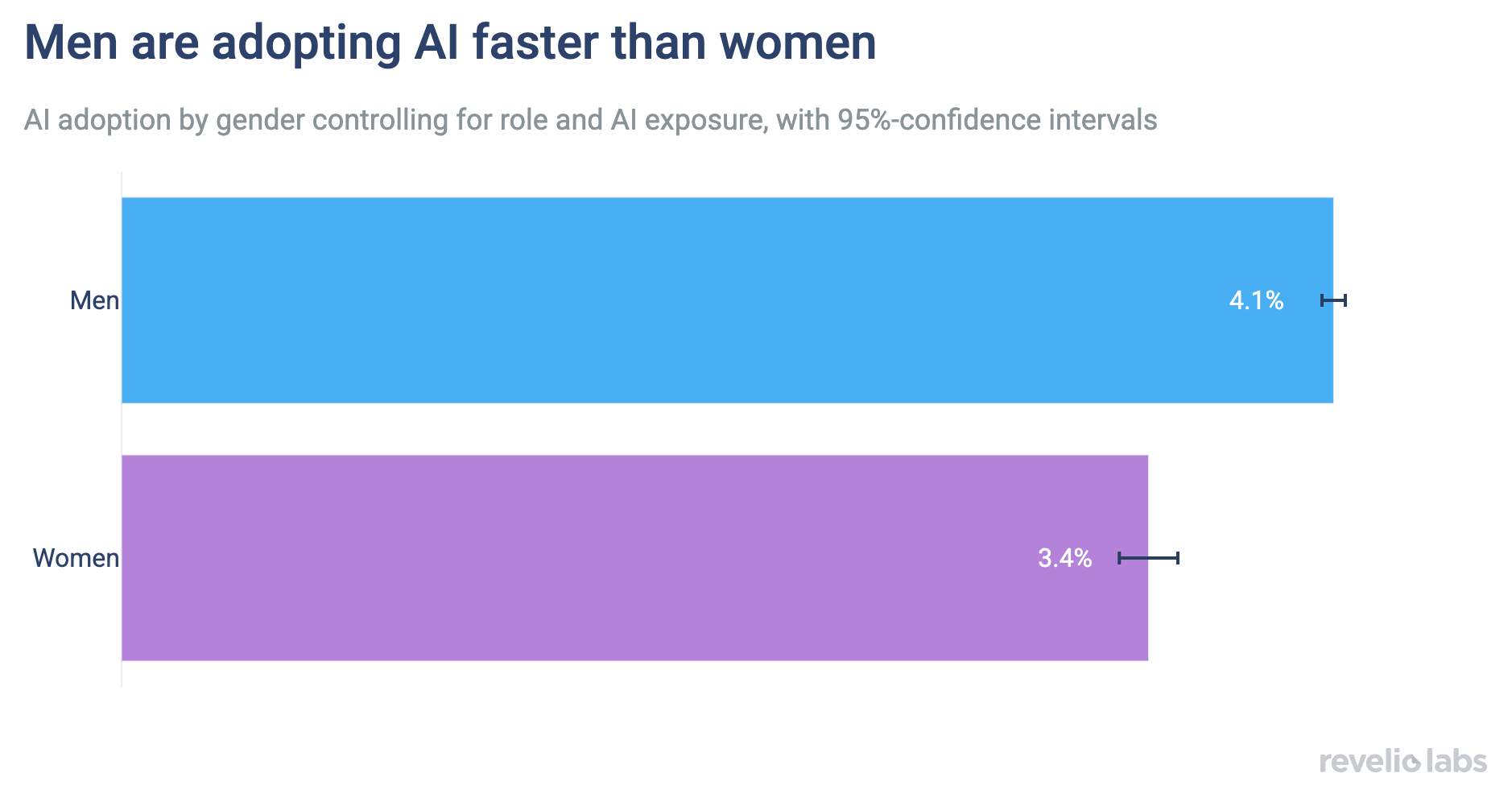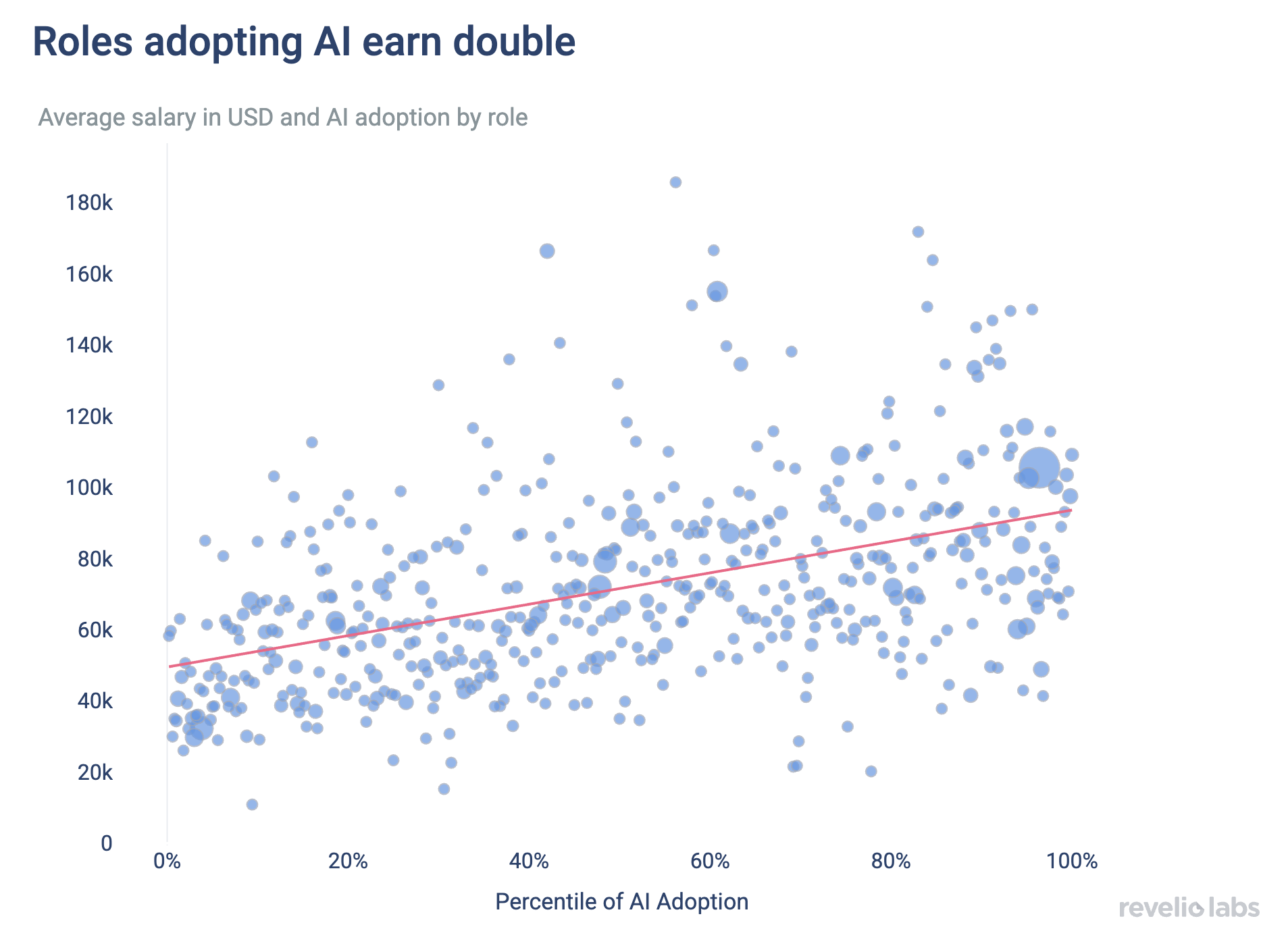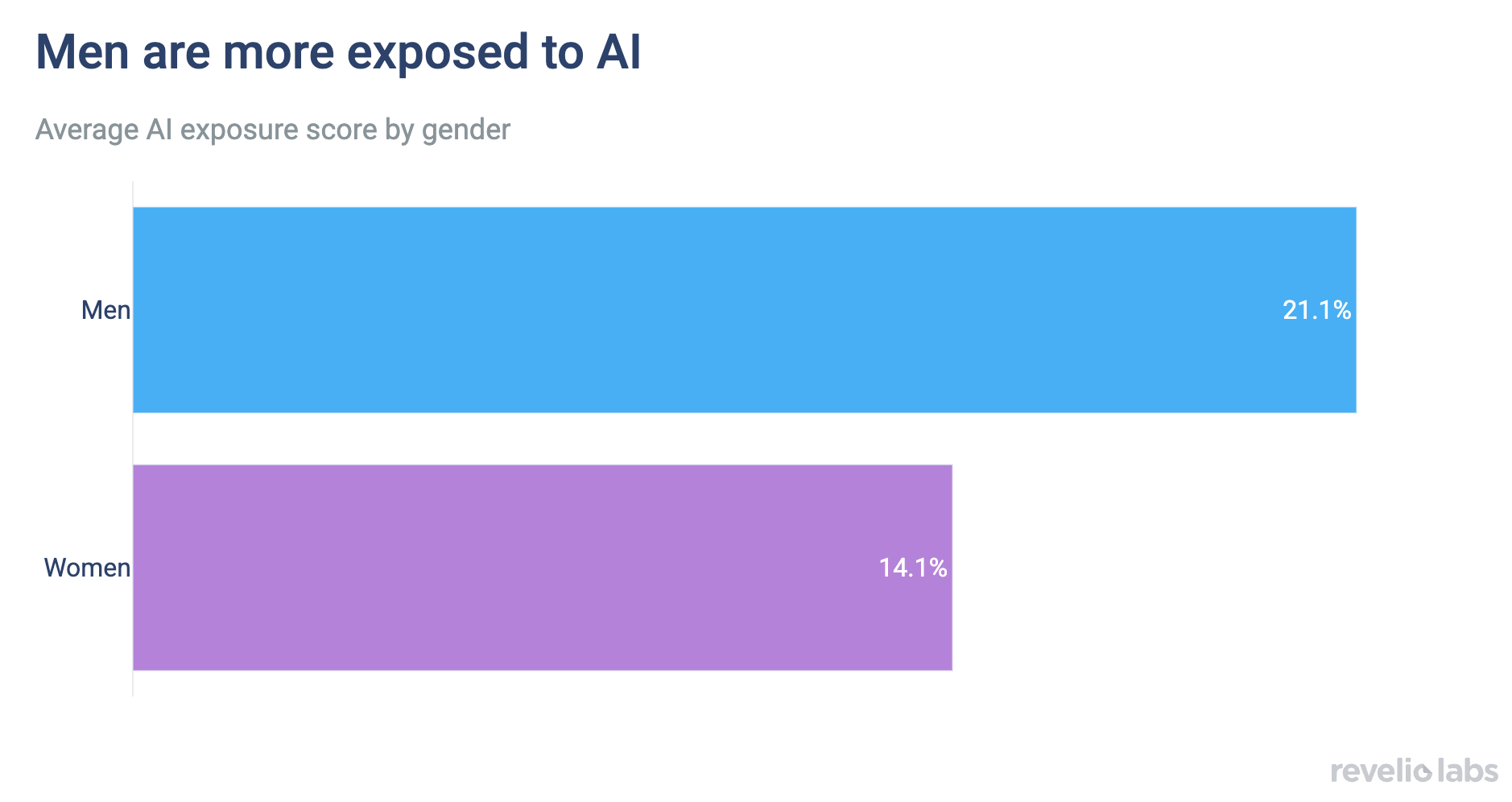This Gender Lags Behind in AI Adoption
And it could mean a wage penalty

The potential impact of AI on the labor market is huge—but only if the technology is being adopted. Currently, women are adopting AI at significantly lower rates than men, even when accounting for occupations.
The low rate of AI adoption among women is problematic because it can contribute to the gender pay gap. Workers in occupations that adopt AI earn twice as much as those in occupations that do not. Even within the same occupation, workers adopting AI earn 10% more than those who do not.
Women are overall less exposed to AI as they are underrepresented in the roles that are most exposed, like Software Engineering and Database administration. This shields them from some of the pressure to adopt the technology.
The potential impact of AI on the labor market is unmistakable. Whether this potential materializes has much to do with the rate at which the technology is being adopted. As we have recently shown, tech roles like Data Engineers and Database Administrators, as well as financial roles like Financial Consultants, are the most AI-exposed occupations. AI adoption is positively correlated with AI exposure, where exposure is measured as the share of activities in a job that can be done or aided by AI. Naturally, the more activities in an occupation can be done by AI, the more likely workers in that occupation are to adopt the technology.
When it comes to technology and gender disparities, we have previously shown that women are underrepresented in AI roles that are focused on developing the technology. But what about their representation in roles that are adopting the technology? We see that the disparity persists: Men are more likely to adopt AI at work than women.


Comparing adoption rates in general, men's rates of AI adoption are double those of women’s. The major driver for this trend are differences in occupational distributions among men and women. However, even after controlling for role and exposure, we find that women are less likely to adopt AI tools by 0.7 percentage points. That is, even when men and women are doing the same job with the same activities, women are adopting AI at a lower rate. While that may seem like a small difference, given the low baseline adoption rate, this actually amounts to a 20% difference in adoption rates between men and women.
It is important to note that our AI-adoption measurement relies on the presence of AI-related keywords in workers’ job profiles. It is possible that while women may be using these tools, they do not mention them on their profiles as much as men do. We have documented differences in the language women and men use to describe themselves professionally, where women tend to use more passive language while men are more vocal about their accomplishments.


Whether there is a true difference in adoption or gap in measurement is of lesser importance, however, because we see that higher adoption rates are associated with higher salaries. Across occupations, workers who adopt AI earn twice as much as those that do not adopt. This has more to do with the nature of occupations that have a high propensity to adopt AI.The most exposed roles, which in turn have higher adoption rates, are generally high paying roles. This is a testament to the fact that AI is very different from previous waves of automation.
More importantly, even within the same occupation and AI exposure, a worker adopting AI earns 10% more than a worker who does not. Relating this back to the difference in adoption between men and women, the 20% difference in adoption rates can translate to a 2% salary penalty for women. For comparison, the overall gender wage gap when accounting for differences across occupation, education and other demographics, hovers around 8-12% in the US. Whether we are truly measuring a gender adoption gap or a gap in profile language, the resulting wage difference remains.


What is driving these discrepancies in AI adoption between men and women? The overall difference stems from the fact that women are underrepresented in occupations that have a higher adoption rate in the first place. The plot above shows gender representation in the ten most AI-exposed occupations. For eight out of these ten occupations, women are in the minority.
Looking at AI exposure scores by gender, we see that this representation difference results in women being overall less exposed to AI than men are. While men have an average AI exposure score of 21%, women can only outsource about 14% of their tasks to an AI tool. This means that in jobs in which women are typically in the majority, fewer activities can be done by AI.


Women tend to be highly represented in occupations that have a high share of activities that require human interaction or social skills, such as healthcare, education or sales. To some extent this is good news, as women may be more protected from the potentially labor replacing effects of AI technology. Nevertheless, in occupations with high returns to using AI, women should both embrace the technology and use it to their advantage, and–more importantly–talk about using it!


